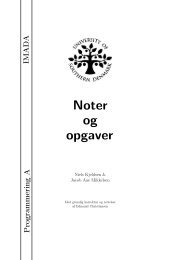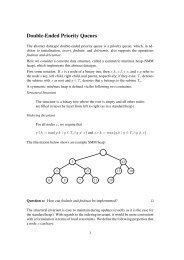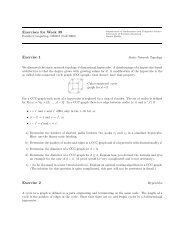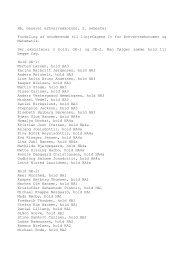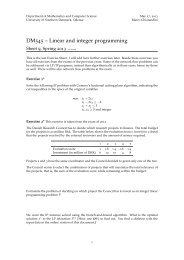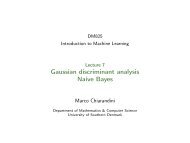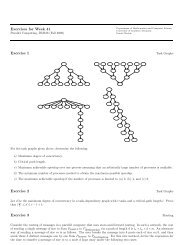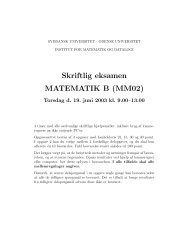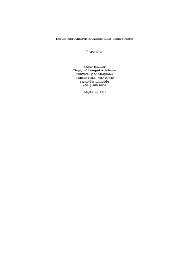PROJEKTKATALOG 20100125.pdf - Institut for Matematik og ...
PROJEKTKATALOG 20100125.pdf - Institut for Matematik og ...
PROJEKTKATALOG 20100125.pdf - Institut for Matematik og ...
Create successful ePaper yourself
Turn your PDF publications into a flip-book with our unique Google optimized e-Paper software.
N a t u r v i d e n s k a b e l i g t P r o j e k t 2 0 1 0<br />
Projekt 46: Self-cleaning surfaces – the Lotus effect<br />
Vejleder: Beate Klösgen, kloesgen@ifk.sdu.dk; Per Morgen, per@ifk.sdu.dk<br />
<strong>Institut</strong>: <strong>Institut</strong> <strong>for</strong> Fysik <strong>og</strong> Kemi (IFK)<br />
Praktisk del: Memphys labs<br />
Gruppeplacering: IFK , MEMPHYS labs<br />
Gruppestørrelse: Mindst 3 <strong>og</strong> max 3 deltagere. Én gruppe kan arbejde med projektet.<br />
Kommentarer: Teaching language will be a mixture of English and Danish;<br />
reporting / presentation can be chosen to be per<strong>for</strong>med in either language<br />
Keywords:<br />
nanobioscience / physics: Lotus effect / wetting –dewetting / hydrophobic effect<br />
Abstract<br />
The Lotus plant is famous not only <strong>for</strong> its exotic beauty but as well the self-cleaning properties<br />
of its leaves: rain or water condensed onto the leave surface spontaneously <strong>for</strong>m small droplets<br />
that might grow until the leave bents under the load to spill them off. On<br />
their way, the droplets pick up dirt as dust or bacteria thus keeping the<br />
plants clean, healthy, and well-doing. The origin of the effect – now<br />
called Lotus-effect – is a combination of two properties: hydrophobic<br />
material on the leave surface is organized in a minute surface structure<br />
(“roughness”). This causes excessive water repulsion – the surface is<br />
“super-hydrophobic”. The effect allows to walk on water – in principle<br />
at least, as does a pond skater.<br />
Creating surfaces of designed wetting properties, and especially dewetting<br />
of water by controlled processes has recently created huge scientific interest because of<br />
its fundamental relevance in the context of the “hydrophobic effect” and because of its high<br />
technol<strong>og</strong>ical impact.<br />
The practical part involves<br />
in<strong>for</strong>mation gathering (contact interfaces, wetting, contact angles; hydrophobic/hydrophilic<br />
materials; micro-structure triggered super-hydrophobicity; preparation processes),<br />
collecting examples <strong>for</strong> hydrophobic surfaces from nature; preparing them <strong>for</strong> the scanning<br />
electron microscope (SEM),<br />
studying selected hydrophobic surfaces using the SEM,<br />
measuring contact angles,<br />
if time allows: preparation of artificial hydrophobic, hydrophilic and super-hydrophobic surfaces,<br />
and characterizing them<br />
building of your own artificial pond-skater.<br />
The project will start with reading assignments and discussions. Students will learn to assemble<br />
the in<strong>for</strong>mation required using the local library and electronic data bases. They will prepare their<br />
own selection of samples (3-4 types per group) and learn to characterize them by water contact<br />
angles. They will see the SEM, and learn about its function, and how to prepare samples <strong>for</strong> it.<br />
Minikurser<br />
Obligatorisk: Projektarbejde (Microsoft, Nat)<br />
Litteraturliste over metode artikler, som udleveres til de studerende<br />
Handout material will be offered from week 1. Additional material will be found during a literature<br />
search (university library, internet, data bases )<br />
48




